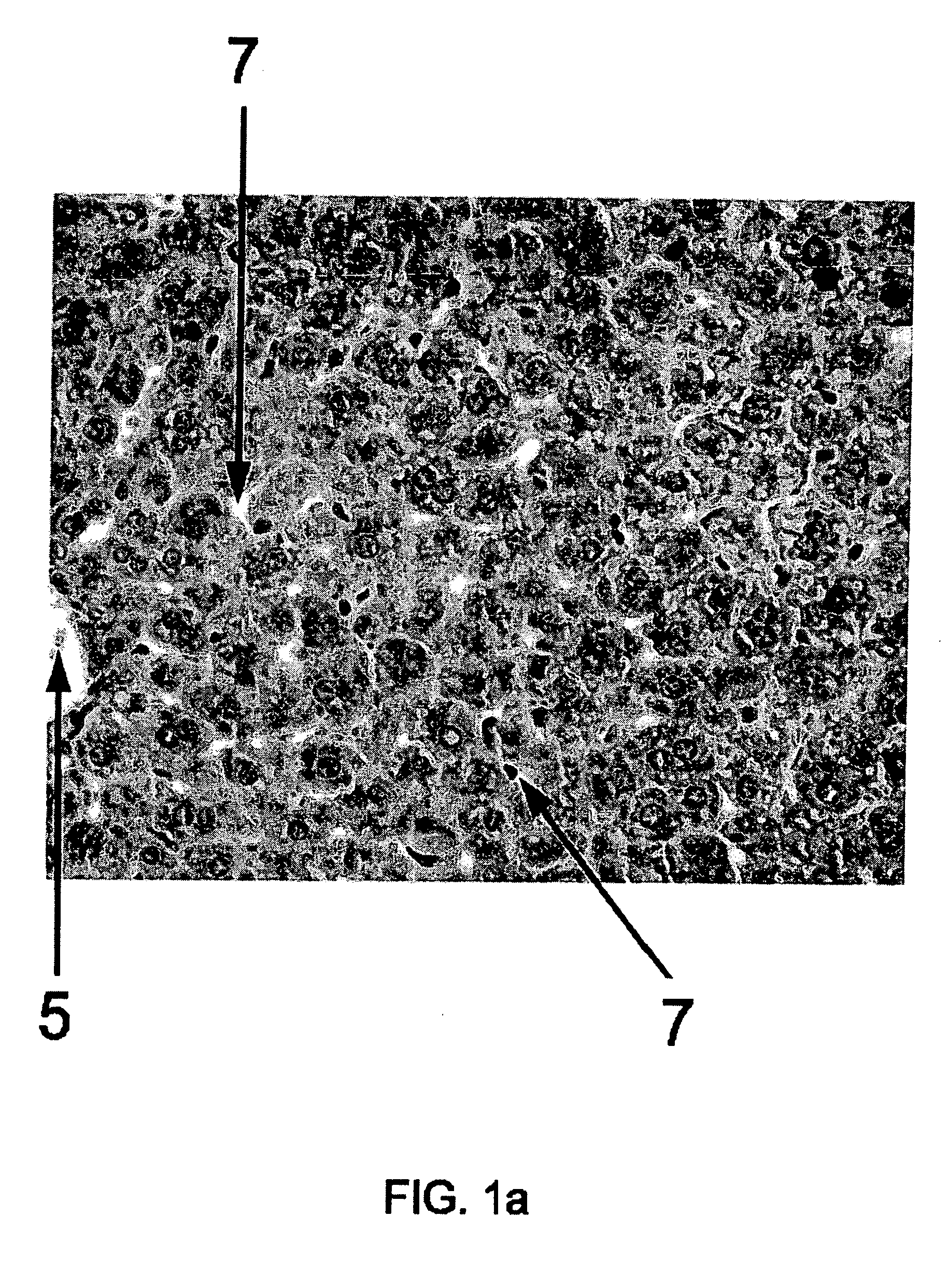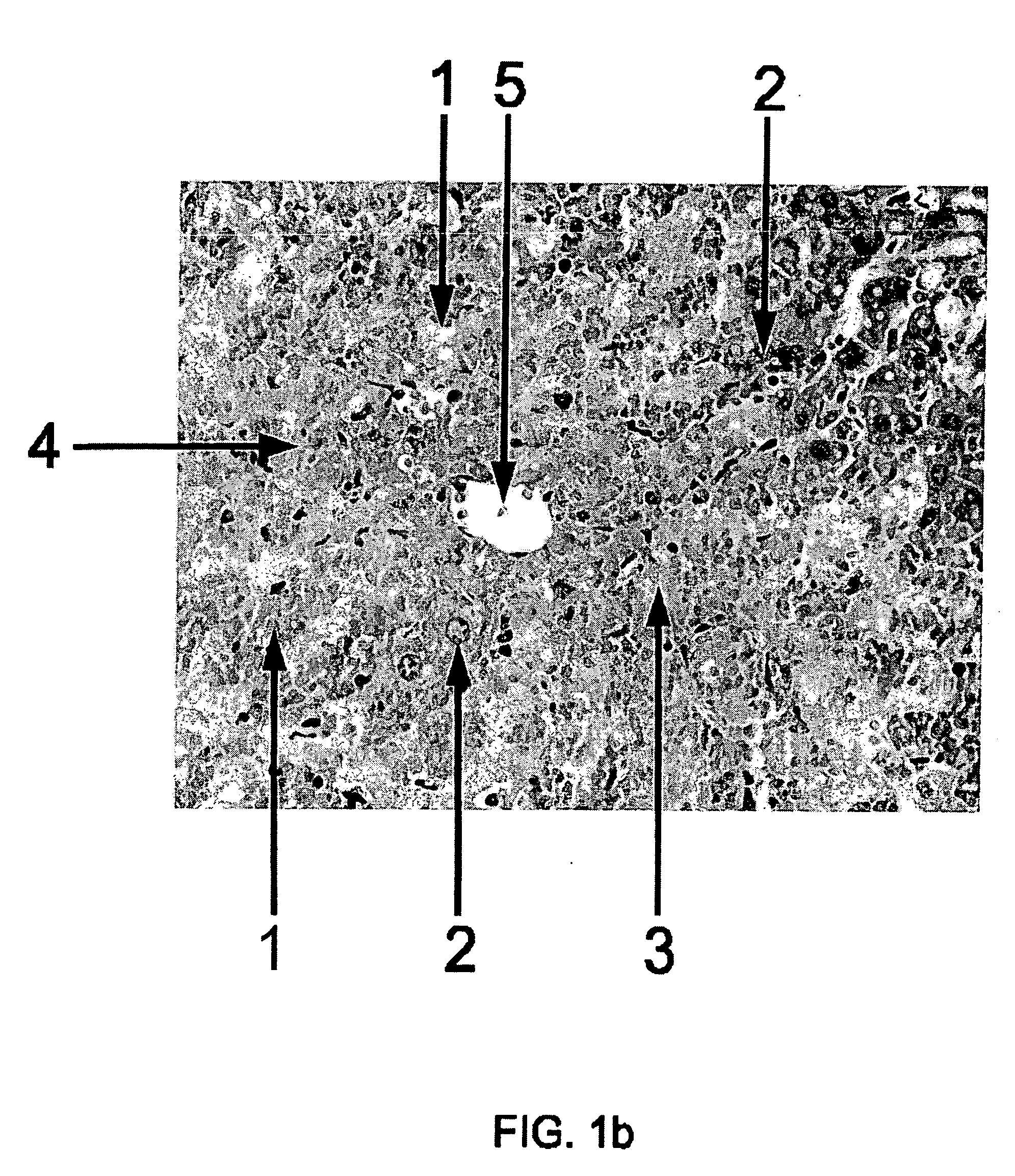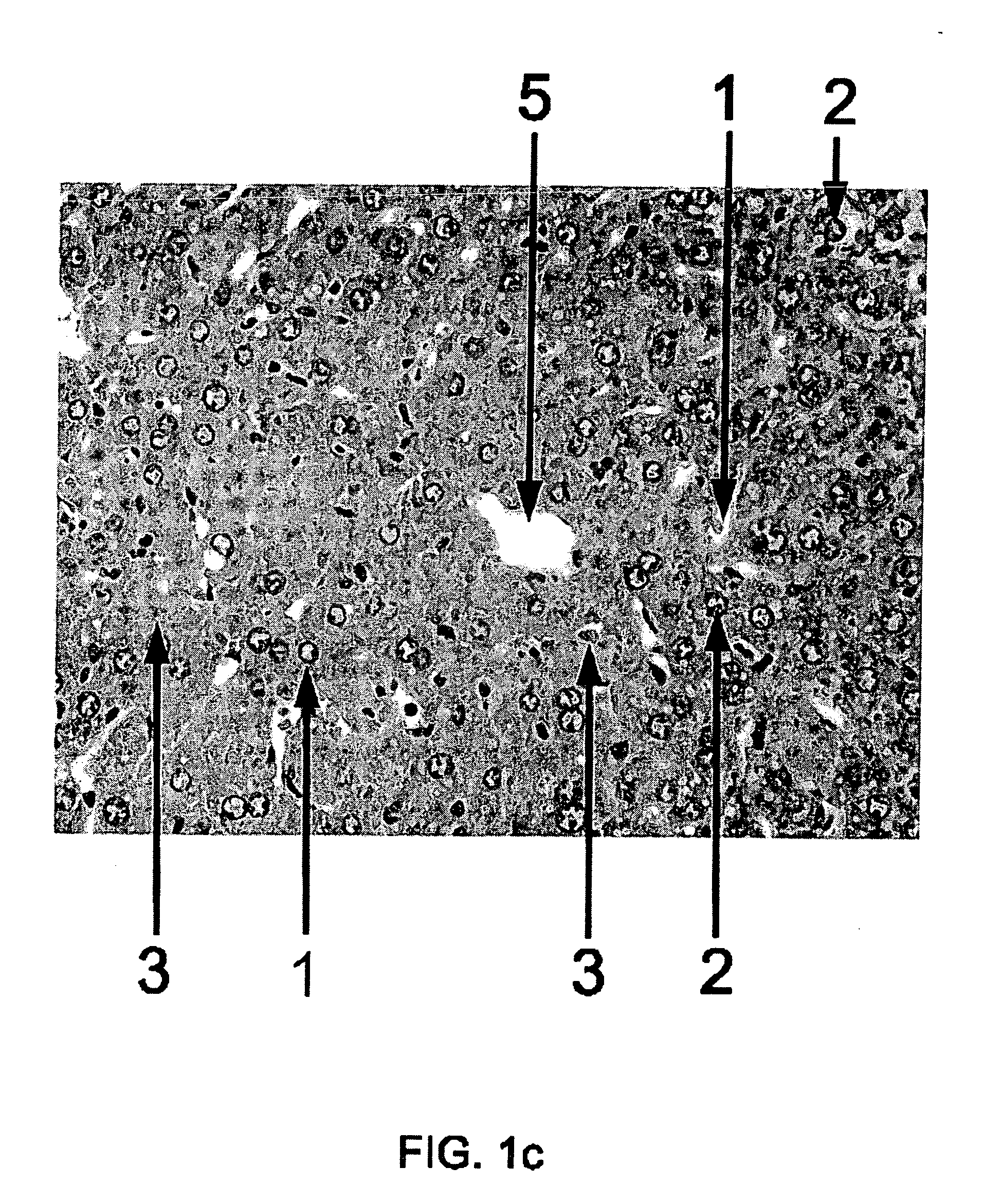Use of mitochondrially targeted antioxidant in treatment and prevention of drug-induced liver disease
- Summary
- Abstract
- Description
- Claims
- Application Information
AI Technical Summary
Benefits of technology
Problems solved by technology
Method used
Image
Examples
example 1
Experimental Induction of Hepatocyte Damage in Mouse Liver
[0098] Hepatocyte damage in mouse livers by acute or chronic intoxication of various mouse strains: e.g., C57B1 / 6 mice (Harlan Winkelmann, Germany) with paracetamol (Tylenol, Mc Neil Consumer plus Specially Pharamceuticals Division, US) or non steroidal antiinfalmatory drug carprofen (Rimadyl, Pfizer, US) in combination with 3,5-diethoxycarbonyl-1,4-dihydrocollidine (DDC) (Sigma) is performed.
[0099] Animals are kept in conventional cages or in sterile isolators with a 12 hrs day-night cycle. Animals receive humane care according to the criteria outlined in the “Guide for the Care and Use of Laboratory Animals” prepared by the National Academy of Sciences and published by the National Institutes of Health; NIH publication 86-23, revised 1985.
[0100] Mice (8 weeks old) are fed a standard diet. Paracetamol is administered by oral gavage (500 mg / kg of animal). Carprofen is given by intraperitoneal injection (three times every 2...
example 2
Evaluation of Liver Alterations
[0103] Liver samples prepared according to Example 1 are used for simple histologic staining such as with haematoxylin and eosin (Luna L. G., 1968, Manual of Histologic staining methods of the Armed Forces Institute of Pathology, 3rd edition. McGraw Hill, New York).
example 3
Effect of the Antioxidants According to the Invention on Liver Pathology
[0104] To evaluate the impact of the antioxidants according to the invention on regression of morphological alterations in early stages of paracetamol-intoxicated mice livers, a group of animals are treated on day one with MitoQ (a mixture of MitoQuinol [10-(3,6-dihydroxy-4,5-dimethoxy-2 methylphenyl)decyl]triphenylphosphonium bromide and MitoQuinone [10-(4,5-dimethoxy-2-methyl-3,6-dioxo-1,4-cyclohexadien-1-yl)decyl]-triphenylphosphonium bromide (provided by Prof. Albin Hermetter, TU Graz, AT), diluted with PBS / 1% DMSO in three different concentrations (200 nM, 300 nM and 400 nM) intraperitoneally with maximum administration volume 100 μl (controls receive 100 μl PBS / 1% DMSO only). For injections, MitoQ is dissolved in PBS supplemented with sufficient DMSO (preferably 1%) to maintain solubility of antioxidants. Intraperitoneal or i.v. (tail vein) injections are given to pairs of mice and compared with vehicle-i...
PUM
| Property | Measurement | Unit |
|---|---|---|
| Lipophilicity | aaaaa | aaaaa |
Abstract
Description
Claims
Application Information
 Login to View More
Login to View More - R&D
- Intellectual Property
- Life Sciences
- Materials
- Tech Scout
- Unparalleled Data Quality
- Higher Quality Content
- 60% Fewer Hallucinations
Browse by: Latest US Patents, China's latest patents, Technical Efficacy Thesaurus, Application Domain, Technology Topic, Popular Technical Reports.
© 2025 PatSnap. All rights reserved.Legal|Privacy policy|Modern Slavery Act Transparency Statement|Sitemap|About US| Contact US: help@patsnap.com



